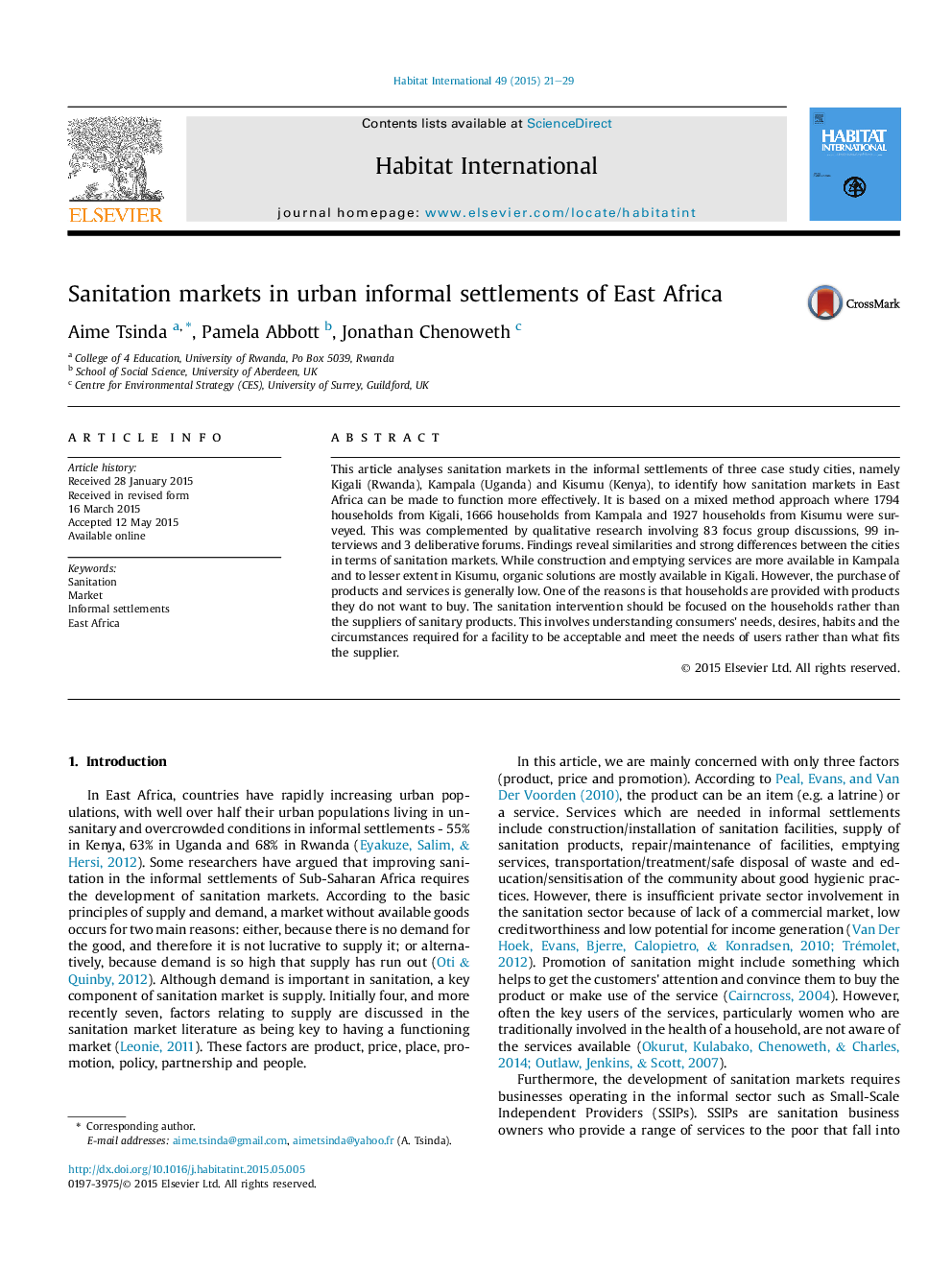| Article ID | Journal | Published Year | Pages | File Type |
|---|---|---|---|---|
| 7456044 | Habitat International | 2015 | 9 Pages |
Abstract
This article analyses sanitation markets in the informal settlements of three case study cities, namely Kigali (Rwanda), Kampala (Uganda) and Kisumu (Kenya), to identify how sanitation markets in East Africa can be made to function more effectively. It is based on a mixed method approach where 1794 households from Kigali, 1666 households from Kampala and 1927 households from Kisumu were surveyed. This was complemented by qualitative research involving 83 focus group discussions, 99 interviews and 3 deliberative forums. Findings reveal similarities and strong differences between the cities in terms of sanitation markets. While construction and emptying services are more available in Kampala and to lesser extent in Kisumu, organic solutions are mostly available in Kigali. However, the purchase of products and services is generally low. One of the reasons is that households are provided with products they do not want to buy. The sanitation intervention should be focused on the households rather than the suppliers of sanitary products. This involves understanding consumers' needs, desires, habits and the circumstances required for a facility to be acceptable and meet the needs of users rather than what fits the supplier.
Related Topics
Social Sciences and Humanities
Social Sciences
Development
Authors
Aime Tsinda, Pamela Abbott, Jonathan Chenoweth,
